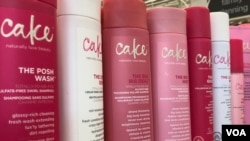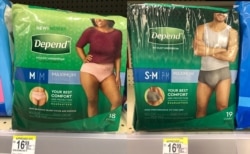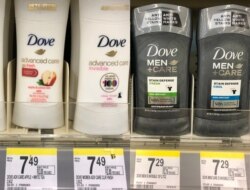Not only do women already earn 82 cents for every dollar a man makes, but they also pay more for personal products and services like razors, shampoo, haircuts and clothes.
This so-called “pink tax” follows a woman from the cradle to the grave, over her entire life span, according to the research, including a 2015 report from the New York City Department of Consumer Affairs (DCA).
The New York City DCA analyzed almost 800 items in 35 product categories and found that items for female consumers cost more than products for men across 30 of those categories.
Overall, women’s products cost 7% more than similar products for men. Women pay more than men for comparable personal care products 56% of the time.
The report found women pay:
— 7% more for toys and accessories
— 4% more for children’s clothing
— 8% more for adult clothing
— 13% more for personal care
— 8% more for senior/home health care products
Baby clothes specifically for girls cost more than clothes for boys. Girls’ shirts can cost up to 13% more than boys’ clothes. Toys marketed to girls cost up to 11% more than toys for boys, even when it's the exact same item in different colors.
“I have no doubt that it's real,” says Surina Khan, CEO of the Women’s Foundation of California. “We just have to go to any store, and you can see that, let's say, a pink razor blade versus a blue one that men use, the pink one costs more. Haircuts cost more. Women's clothing cost more. It's definitely present and part of our reality.”
It even costs more for women to get old.
The report found that braces and supports for women cost 15% more; canes cost 12% more; and personal urinals 21% more for female senior citizens.
The price differences suggest women pay a yearly “gender tax” of about $1,351, despite buying the same products and services as men.
“I absolutely think it's gender discrimination,” Khan says. “Some people will say that it's more expensive to cut women's hair, but that is clear gender discrimination, because really it depends on whether you have long hair or short hair, about the amount of time that it takes to cut your hair. Many women have short hair. They shouldn't have to pay more than a man for a short haircut.”
The National Retail Federation, which calls itself the world’s largest retail trade association, declined to comment for this article. However, Steven Horwitz, a professor of economics at Ball State University, says the price differences are similar to discounts for senior citizens.
“Senior citizens aren't as fussy about when they see the movie, but they are fussier about what price they're willing to pay for it, so we give them discounts,” Horwitz says. “Sellers engage in this behavior all the time. What bothers us about this one is that the way they're dividing up groups is by gender.”
Horwitz also says the real problem is that girls and women are socialized to want the pink items.
“There is no reason why women shouldn't be able to walk into the drugstore and buy the men's razors. Right?” he says. “And if they did, and if they were clear that they didn't care, there wouldn't be a more expensive women's version.”
Congress is making a move to end the pink tax. In April, Democratic Congresswoman Jackie Speier of California, and Republican Congressman Tom Reed of New York, introduced a bipartisan bill with 50 co-sponsors. The Pink Tax Repeal Act would require that comparable products marketed toward men and women be priced equally.
“I think that if you're charging women more and people are paying it, then there's motivation to do that. But it's discriminatory, and it needs to stop,” Khan says. “It has a cumulative effect over our lifetime because if we're paying more for products, and earning and owning less, then it's basically contributing to gender inequality.”











